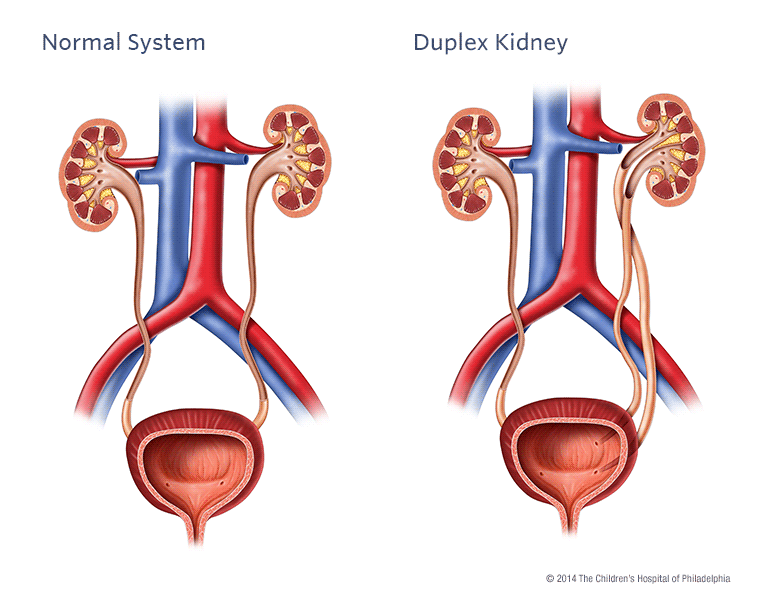What is a UTI?
In this article, we will describe what is a UTI.
A urinary tract infection (UTI) is an infection in any part of the urinary tract (system). The system includes the kidneys, ureters, bladder and urethra (and prostate in a man).

Urinary tract
Anatomical classification of UTIs
There are different types of UTI, and the symptoms are different. The doctors name for the type of infection, depends on which anatomical part of the urinary tract is affected, e.g.
- Kidney = pyelonephritis – causing pain in the back/side of tummy
- Bladder = cystitis – lower tummy pain at the front, burning when you wee, and weeing more frequently
- Urethra = urethritis – burning when you wee, and weeing more frequently
- Prostate = prostatitis (men only) – pain in genital area.
Most infections involve the lower urinary tract – the bladder (cystitis) and urethra (urethritis). Cystitis is the commonest. For such infections, in adult women of child bearing age, there is not (usually) an underlying cause.
What bacteria cause UTIs?
- The most common bacterium is Escherichia coli (in 70 to 95% of cases)
- Less commonly organisms include Staphylococcus saprophyticus (approximately 5-10% of cases), Proteus mirabilis (more common in males, associated with urinary tract abnormalities, particularly stones), and Klebsiella species
- Streptococci rarely cause uncomplicated UTI; although a type called Lancefield Group B streptococci may cause infection in some women
- Candida (a fungus) species rarely cause UTI. When they do, they are usually linked to indwelling catheters in the bladder, immunosuppression (drugs or diseases that suppress the immune system) or contamination from the genital area.
How do the bacteria enter the body?
Urinary tract infection (UTI) is usually caused by bacteria from the gastrointestinal tract. Entry of bacteria to the urinary tract can be:
- Retrograde – bacteria ascend through the urethra into the bladder
- Via the blood stream – more likely in people who are immunosuppressed
- Direct – for example with insertion of a catheter into the bladder, or surgery.
What are two ‘types’ of UTI?
As well as the anatomical way of describing UTIs described above (favoured by CKDEx), there is another classification system.
- Uncomplicated UTIs – these mainly affect the bladder (cystitis), are mild, and are usually treated with oral antibiotics. An ultrasound is usually not necessary
- Complicated UTIs – these mainly affect the kidney (pyelonephritis), and more severe, and are usually treated with intravenous (IV) antibiotics. An ultrasound is usually done.
Note. The words ‘uncomplicated’ and ‘complicated’ are not easy to define. ‘Uncomplicated’ is usually taken to mean a UTI with an (anatomically) normal urinary tract. Whereas ‘complicated’ means an abnormal urinary tract, and there is an underlying structural problem somewhere (that you need to find, as it is ‘causing’ the UTI). But this is not entirely true.
For example, after an acute pyelonephritis, the kidney may return to normal, and there was no structural problem in the urinary tract.
What causes complicated UTIs?
There may be an underlying problem.
- Structural problems:
- Kidney or bladder stones
- Congenital problems (that you are born with) – e.g. a duplex (double) ureter (see below)
- Prostate problems (man)
- Cancer in the urinary tract
- Semi-inherited rare conditions (e.g. reflux nephropathy)
- Non-structural:
- Suppression of the immune system.

Summary
We have described what is a UTI. We hope you understand them better now.
Last Reviewed on 20 April 2024
